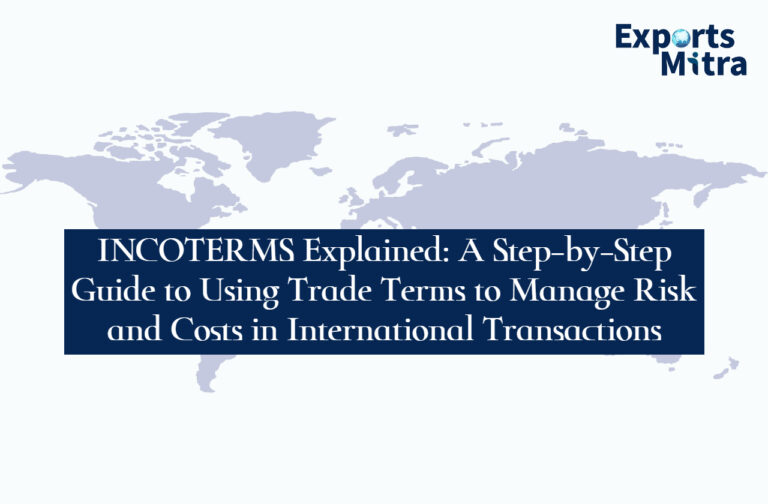Introduction
In today’s globalized economy, international trade plays a pivotal role in the growth and development of nations. Export promotion measures are vital for countries seeking to enhance their competitiveness in the global market. In this context, Duty Credit Scrips (DCS) emerge as a significant tool provided by the Government of India under its Foreign Trade Policy (FTP). This article aims to provide exporters with a detailed understanding of Duty Credit Scrips, their significance, utilization, and implications.
Understanding Duty Credit Scrips
Duty Credit Scrips are a form of trade incentive extended by the Indian government to promote exports of goods manufactured, produced, or exported from India. These scrips are granted to exporters under various schemes such as the Merchandise Exports from India Scheme (MEIS), Service Exports from India Scheme (SEIS), and Remission of Duties and Taxes on Exported Products (RoDTEP).
Significance of Duty Credit Scrips
- Export Incentives: Duty Credit Scrips serve as a means to incentivize exporters and encourage them to explore new markets and increase the volume of exports.
- Competitiveness: By providing duty exemptions or credits, these scrips enhance the competitiveness of Indian exporters in the global market, making their products more attractive to international buyers.
- Cost Reduction: Utilizing Duty Credit Scrips enables exporters to offset their customs duty liabilities, thereby reducing their operational costs and improving profit margins.
- Market Diversification: Duty Credit Scrips often incentivize exporters to diversify their export destinations, thereby reducing dependency on a single market and mitigating risks associated with market fluctuations.
Utilization of Duty Credit Scrips
Duty Credit Scrips can be utilized by exporters in the following ways:
- Customs Duty Payment: The primary purpose of Duty Credit Scrips is to offset customs duties on the import of inputs or goods. Exporters can use these scrips to pay for customs duties, safeguard duties, anti-dumping duties, and any other customs duty as specified under the Foreign Trade Policy.
- Transferability: Duty Credit Scrips are freely tradable and transferable. Exporters who have accumulated these scrips but do not have a need for them can sell them to other entities in need, thereby monetizing their incentives.
- Enhancing Cash Flow: Utilizing Duty Credit Scrips for customs duty payment improves exporters’ cash flow by reducing the immediate financial burden associated with imports.
- Compliance Requirements: Exporters must adhere to the rules and regulations governing the utilization of Duty Credit Scrips as prescribed under the Foreign Trade Policy. Failure to comply with these regulations may lead to penalties or loss of benefits.
Key Considerations for Exporters
- Scheme Eligibility: Exporters must ensure that they qualify under the relevant export promotion scheme to avail Duty Credit Scrips. Understanding the eligibility criteria and application process is crucial for maximizing benefits.
- Utilization Timelines: Duty Credit Scrips have a validity period within which they must be utilized. Exporters should carefully plan their import activities to align with the expiry dates of the scrips and avoid any lapse in benefits.
- Market Dynamics: The market for Duty Credit Scrips experiences fluctuations based on demand and supply dynamics. Exporters should stay informed about market trends and make informed decisions regarding buying or selling scrips.
- Compliance and Documentation: Exporters must maintain accurate records and documentation related to the acquisition and utilization of Duty Credit Scrips to ensure compliance with regulatory requirements.
Conclusion
Duty Credit Scrips play a pivotal role in India’s export promotion strategy, providing exporters with valuable incentives to enhance their competitiveness in the global market. By offsetting customs duty liabilities, these scrips contribute to cost reduction, market diversification, and cash flow optimization for exporters. However, exporters must navigate the complexities of scheme eligibility, utilization timelines, and compliance requirements to fully capitalize on the benefits offered by Duty Credit Scrips. With careful planning and strategic utilization, exporters can leverage these incentives to drive growth, profitability, and sustainability in their export endeavors.






